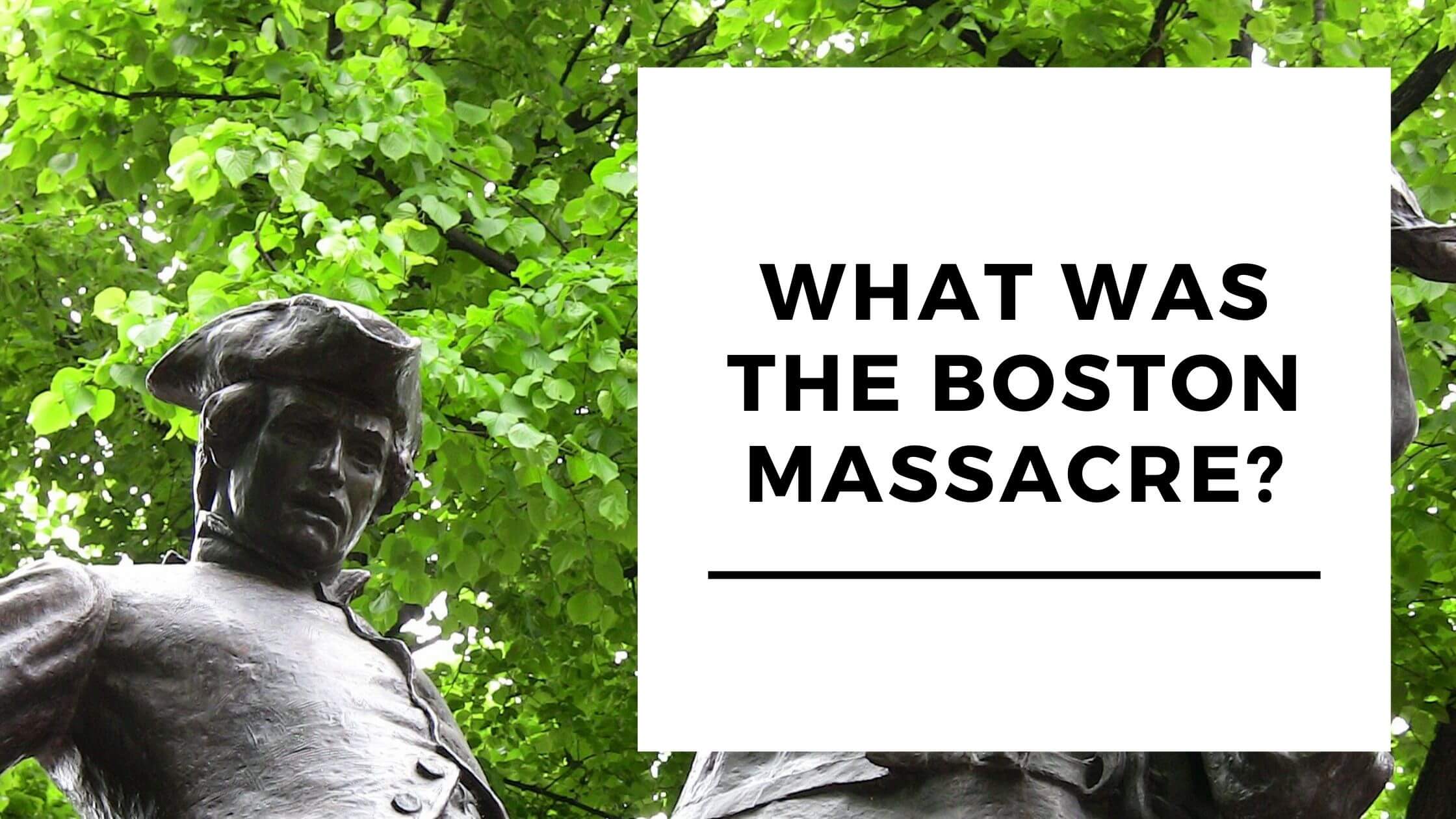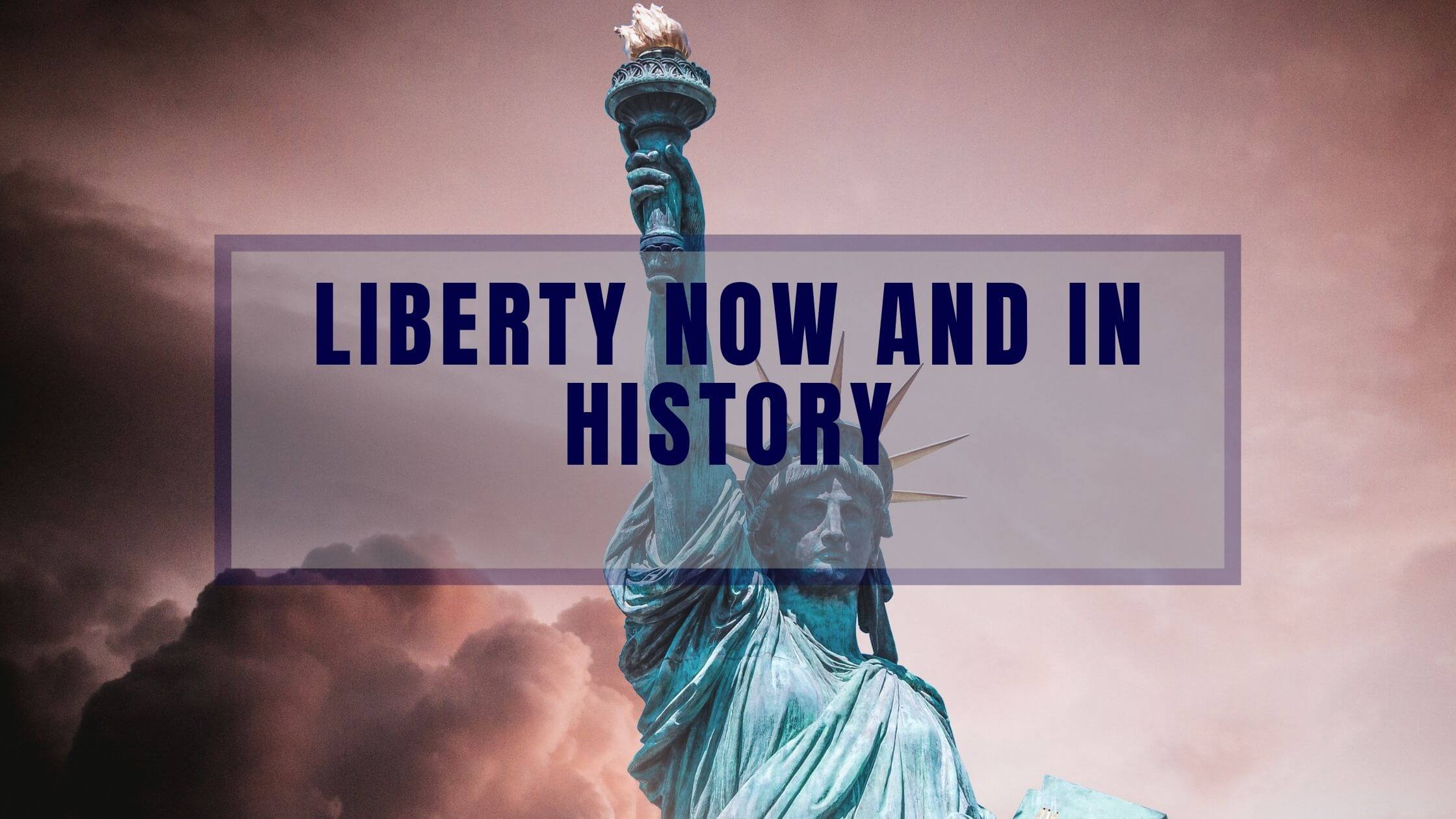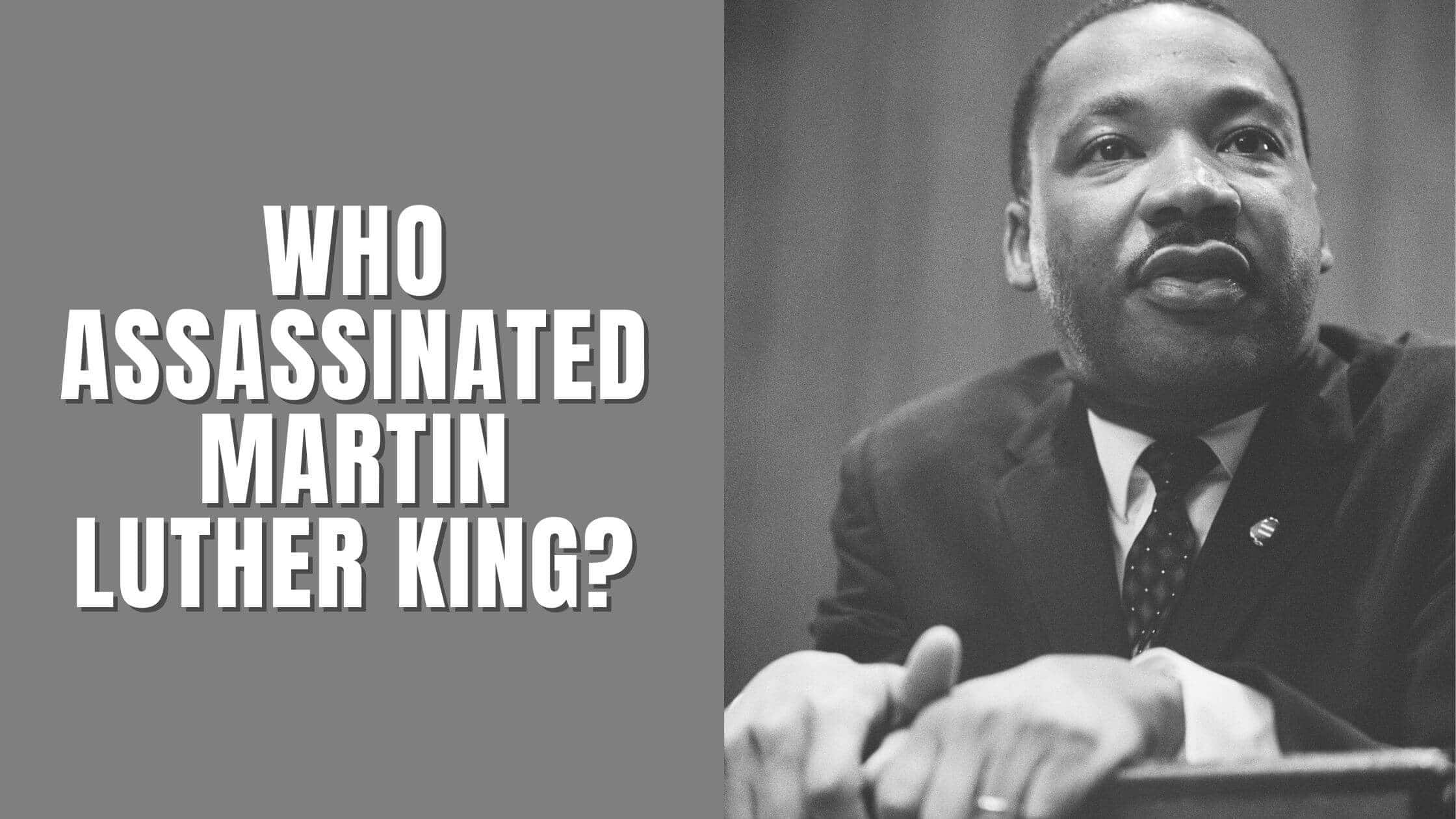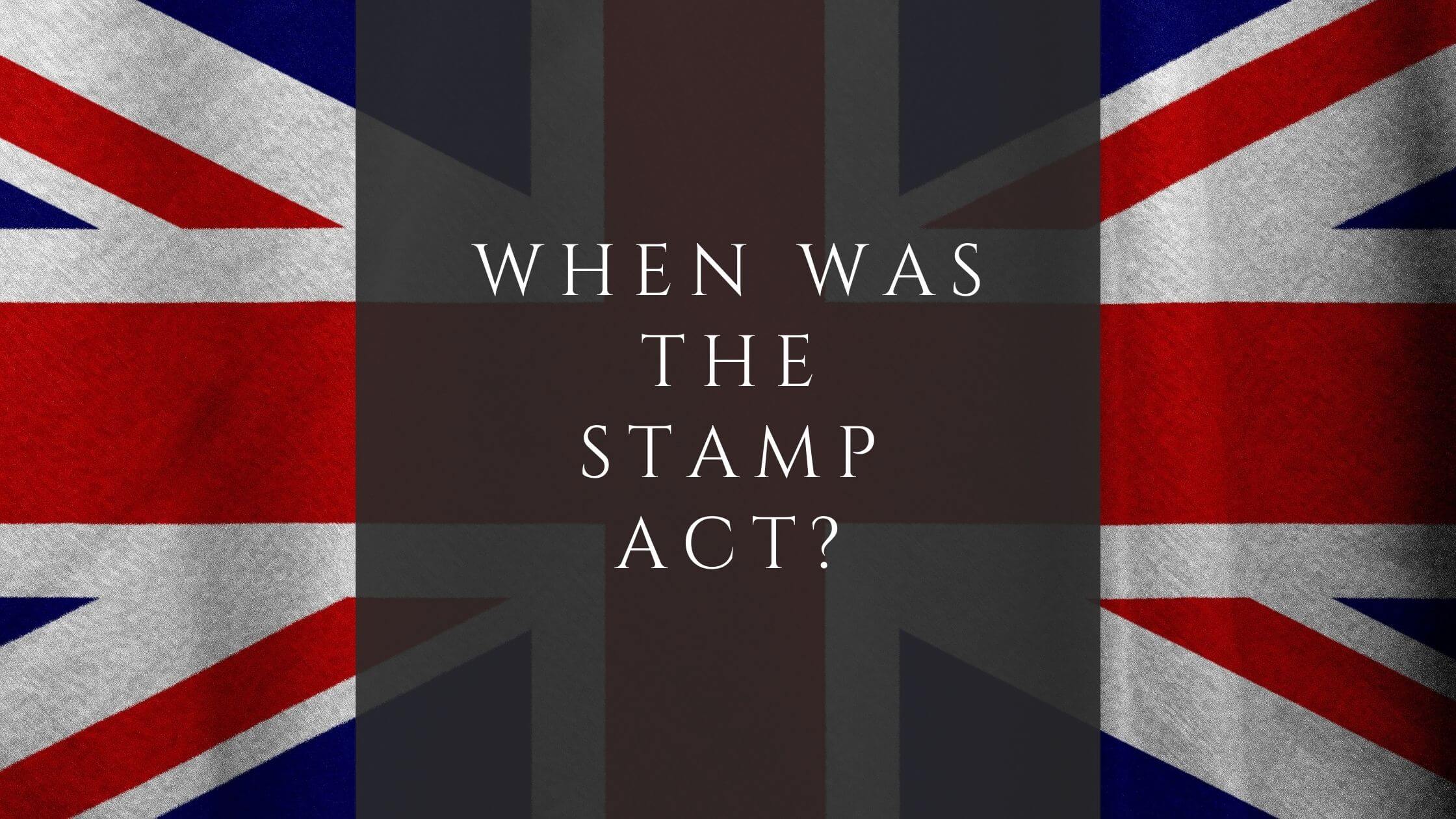Table of Contents
ToggleSources
- https://www.history.com/topics/early-us/shays-rebellion
History.com provides a comprehensive overview of Shays' Rebellion, detailing its causes, key events, and significance in American history. It is a reliable source from a well-known historical platform. - https://www.mountvernon.org/library/digitalhistory/digital-encyclopedia/article/shays-rebellion/
The Mount Vernon website offers an authoritative account of Shays' Rebellion, including George Washington's perspective and its impact on the formation of the U.S. Constitution. It is a trusted source associated with George Washington's estate. - https://www.britannica.com/event/Shayss-Rebellion
Encyclopaedia Britannica provides a detailed and scholarly article on Shays' Rebellion, covering its background, events, and consequences. It is a highly authoritative and reliable source. - https://www.archives.gov/milestone-documents/shays-rebellion
The National Archives offers primary documents and historical context related to Shays' Rebellion, making it an essential source for understanding the rebellion's legal and governmental implications. - https://www.masshist.org/object-of-the-month/objects/shays-rebellion-2009-01-01
The Massachusetts Historical Society provides insights into Shays' Rebellion through primary sources and artifacts, offering a unique perspective on the events from a local and historical standpoint.
Key Points
- Shays Rebellion began in 1786 when 4,000 farmers in Massachusetts organized to shut down courts and protest economic hardships, including high taxes and debt enforcement.
- The rebellion was fueled by economic distress among farmers, including heavy taxes payable in hard money (silver or gold) and strict debt collection that led to widespread foreclosures and imprisonments.
- Massachusetts' 1780 constitution, drafted by elites like John Adams, imposed property qualifications for voting and office-holding, disenfranchising many farmers and consolidating power in Boston's mercantile class.
- Farmers initially petitioned the government for relief, but their grievances were ignored, leading to organized protests and court closures under leaders like Daniel Shays and Luke Day.
- Governor James Bowdoin responded harshly, suspending habeas corpus, passing riot acts, and raising a private army to suppress the rebellion, culminating in a violent clash at the Springfield Armory in January 1787.
- After the rebellion was crushed, the state offered pardons to rank-and-file rebels but barred them from voting or holding office, while leaders like Shays fled to neighboring states.
- The rebellion led to political change: John Hancock replaced Bowdoin as governor in 1787, and the legislature reduced taxes and debt burdens, easing farmers' hardships.
- Shays Rebellion highlighted the weaknesses of the Articles of Confederation and spurred calls for a stronger federal government, contributing to the Constitutional Convention in Philadelphia in 1787.
- The rebellion exposed class tensions, with farmers accusing Boston elites of corruption and self-interest, while elites viewed the rebels as threats to law and order.
- Historians argue the rebellion was a catalyst for constitutional reform, demonstrating the need for a federal government capable of addressing economic instability and internal unrest.
Summary
Shays' Rebellion (1786-1787) was an armed uprising in western Massachusetts led by indebted farmers protesting high taxes, debt enforcement, and an unresponsive state government. The rebellion, named after former Revolutionary War captain Daniel Shays, highlighted the weaknesses of the Articles of Confederation and spurred calls for a stronger federal government, ultimately contributing to the Constitutional Convention in 1787. Though the rebellion was suppressed, it led to tax reforms and debt relief for farmers, while underscoring the need for a more centralized national authority.
How did Shays Rebellion start?
On December 23rd, 1783, George Washington resigned his commission as commander-in-chief of the Continental Army.
For the next three years, he led a quiet farming life at Mount Vernon. However, in the fall of 1786, he began to receive alarming reports of revolution coming from Massachusetts.
Newspapers reported that a mob of some 4,000 farmers had organized themselves into an army, shutting down courts throughout Massachusetts. It was suggested that the government of Massachusetts itself was in danger of being overthrown by these radicals.
Where did Shays Rebellion take place?
Adding to Washington’s concerns was a letter about the situation, written to him by his friend and former artillery chief, Henry Knox.
In October, Knox wrote
the numbers of these people may amount in Massachusetts to one-fifth part of several populous counties and to them may be added the people of similar sentiments from the states of Rhode Island, Connecticut, and New Hampshire, so as to constitute a body of twelve or fifteen thousand.
In a word, they are determined to annihilate all debts public and private, and have agrarian laws. Something must be done or we shall be involved in all the horror of faction and civil war without a prospect of its termination.
Knox’s Reports
Knox paints a picture of the rebellion as a large interstate insurrection of farmers looking to get their debts extinguished. He suggests the rebellion may even end in Civil War.
David Humphries, a former Washington aide who lived in New Haven seems to confirm Knox’s report. He writes
the troubles in Massachusetts still continue, the government is prostrating in the dust and it is much to be feared that there is not enough energy in that state to re-establish the civil powers.,There is a licentious spirit prevailing among the people, a leveling principle, a desire of change and wish to annihilate all debts public and private
Washington’s concerns
Washington relied heavily on the reports from Knox and Humphreys and was agitated. Was the nation he sacrificed eight years to help form about to dissolve into one of anarchy and revolution?
In November, he wrote a letter to General Benjamin Lincoln in Massachusetts, in which he lamented
are your people getting mad, are we to have the goodly fabric that eight years were spent in rearing pulled over our heads, what is the cause of all these commotions, when and how is it to end?
What caused Shays Rebellion?
However, Washington wanted to know exactly what Shays Rebellion was and its cause. Knox and Humphreys offered a cause. It had been the standard one for years. Was it the correct one, though?
Let’s take a look at what happened in Western Massachusetts and the fall and winter of 1786-87 and discover how these events may have been used as a catalyst for one of the most important events in American history.
Why was Shays Rebellion important?
In 1786, most of western Massachusetts consisted of small family-owned farms. Since the soil in this area was generally rocky, it was difficult for many farmers to eke out a living. In addition, a depressed economy coupled with rising taxes caused most farms to be barely self-sustaining.
To add to the farmers’ hardship, Massachusetts required taxes in hard money, silver, or gold. No paper money was accepted for payment. Since copper and gold were in short supply, this became extremely difficult. Additionally, many farmers had taken on debt to keep their farms afloat.
Now, many holders of that debt also demanded payment in hard money. As a result, farmers who previously paid their debt in paper money, products, or labor are now in severe financial trouble.
A period of relief
From 1780 to 1784, though times were difficult for the farmers, the governor and office were generally sympathetic to their plight. However, Governor John Hancock, understanding that many farmers were former soldiers who had suffered economically during the war, was less than vigorous in enforcing the tax laws.
Tough times for farmers
However, in January 1785, after Hancock left office, the situation turned dramatically worse for the farmers. They were often hauled into court when their debts couldn’t be paid.
From 1784 to 1786, in the farming community of Hampshire County Massachusetts, 31.4% of the county’s men over 16, were taken to court. The numbers were similar in Worcester, Essex, Bristol, and Berkshire counties. Some lost their lands.
Berkshire County Judge William Whiting noted
great numbers of farmers have been constantly stripped of whatever little stocks they possessed and those often sold at auction for a mere trifling,, Others were thrown into jail
Jailed farmers
In Hampshire County from July 1784 to December 1786, the average two-month period saw 73 men sent to jail for relatively small debts. These numbers were similar in other counties.
Historian David Satmari quotes the Massachusetts farmer who summed up this situation of many
our taxes are so high together with calls of a private nature, that our stock and cattle are greatly diminished, the greater part than of those who gloriously supported our independence now find their movables vanishing like empty shades, their lands sinking under their feet
Many of these men were former Revolutionary War soldiers who now found themselves living in a country very different from the one they had envisioned at the war’s end.
Petitions
The citizens of Western Massachusetts initially responded to their situation as they did before the Declaration of Independence. But, first, they petitioned their government for a redress of grievances.
Between 1784 to 1787, 73 rural Massachusetts towns, 30% of all towns, sent petitions to the legislature in Boston, asking them to alleviate the burden on the farmers.
This one from the town of Atholl is typical.
We, therefore, your petitioners, in behalf of the town’s assembly, shew that we are reduced to the most distressing situation by suits being daily commenced against the inhabitants of this as well as many other parts of this Commonwealth. Our jails are filled and still our deaths not discharged, but our property daily diminishing, greatly to the injury of the debtors. Therefore we beg your honors would take our situation into consideration and do something for the relief of your petitioners
For four years, these types of town petitions flooded the legislature. Then, for four years, they were ignored by the legislature.
On July 8th, 1786, the Massachusetts legislature adjourned until January 31st, 1787. They again refused to address the petitions from the western section. The towns were now determined to act.
Western Massachusetts Responds
To determine how to respond to the news from Boston, towns began calling emergency meetings of their governing boards, called selectmen. On July 18th, the town of Pelham in Hampshire County called its meeting.
As was the custom, town meetings were held at local taverns. In Pelham, it was Conky’s Tavern. The selectmen of Pelham decided to write letters to eleven other neighboring towns, calling for a meeting on July 31st at John Bruce’s inn.
This meeting in turn produced a call for a convention of the entire Hampshire County. The selectmen of Pelham, in a letter to the selectmen of Amherst, stated the goal at the convention
find some method to change the state constitution, unless, get a more responsive government
County meetings
By July 23rd, the County Convention was already held in Bristol. Meetings were also planned for Worster, Middlesex, and Berkshire counties. Hampshire County met on August 22nd and was the largest. 15 Hampshire towns were represented. Among the notables in attendance were Hatfields Colonel Seth Murray, John Hastings, representative to the state legislature, Benjamin Ely, West Springfield, former state representative, and William Pynchon, the leader of West Springfield’s most powerful distinguished family.
The convention was hardly a mob of lawless and netted farmers. Instead, the convention proposed to submit a list of grievances and then break up the court next week. The list of grievances composed by Hampshire County contained 21 articles and gave us an insight into the ideological catalyst for Shays Rebellion.
The list of grievances
Some of the main articles called for a radical change in the state government. First, the state constitution was to be amended. Second, the upper chamber of the legislature was abandoned, and qualifications for the lower were revised. Third, there was a significant revision in the state’s court system. Fourth, the tax code was to be changed. Fifth, the scarcity of legal tender was to be addressed.
Also, Hampshire County wanted the legislature to be called back into session immediately to address its grievances. This is not simply a call for relief of debt and the minds of the citizens of Hampshire County. There was something seriously wrong with the government of Massachusetts.
One area of significant contention was the constitution of 1780.
The Massachusetts Constitution of 1780
In the fall of 1780, three and a half years after declaring independence from Britain, the Commonwealth of Massachusetts held a statewide convention at Boston, for the purpose of drafting a new constitution. The task was assigned to a committee consisting of Sam Adams, future governor James Bowdoin, and John Adams. John Adams did most of the writing.
Weather difficulties for delegates
The constitutional delegates were to return to Boston in the winter to ratify the Constitution. However, that winter was one of the worst in the history of Massachusetts. Many delegates from Western Massachusetts could not make the trip because of impassable roads. As a result, only 47 out of originally 247 towns were represented. Most of those towns were within 10 to 15 miles from Boston.
Final decision
These 47 towns made the final decision on what would constitute the text of the Constitution. Some of the articles in the new constitution were particularly cruel to the towns in western Massachusetts. The legislature, or General Court as they called it, consisted of two chambers, an upper and lower.
To hold office in the Senate, one had to have 300 pounds in landholdings and 600 pounds in total wealth. On the other hand, the requirement for holding office in the house representatives was 100 pounds in landholdings within the town and a real estate valued at 200 pounds.
The requirement for holding the office of governor was 1000 pounds inland.
Raised Suspicions
Many in western Massachusetts people felt this disqualified many from office and ensured that the reins of government would remain in the hands of wealthy men, especially those in Boston. Further, the court system contained many complicated layers with an appointed judiciary.
Many believe the judicial system created by the Constitution was unfair as it complicated the legal system, thus increasing fees and enriching lawyers.
Unjust Constitution
Finally, no amendments to the new constitution were allowed for 15 years. With this provision, many recognize that there would be no way to remedy the situation if the Constitution proved unjust.
Particularly offensive to those of Western Massachusetts was the qualification for voting. The vote for state officers was limited to white men who had a net worth of 60 pounds. This was 20 pounds more than required by the British under the old colonial Charter.
Several towns expressed their opposition to the voter qualification clause and property requirements for state office enumerated in the Constitution.
Thirty towns felt that any man respected in the community or who served in the militia and defended the Commonwealth should have the right to vote.
Incoming protests
The town of Colerain protested on the voting Clause
taxation without representation, we consider unreasonable. On holding elective office we consider money no qualification in this matter
Belchertown rejected property qualification for voting, saying that it
denied that liberty and freedom, which we are contending for this day
The town of Greenwich said it violated natural rights.
New Salem suggested it was unjust to tax men without their consent. The town of Peterson said riches and dignity neither make the head wiser nor the heart better.
A verdict for the Constitution of 1780
Interestingly, the future US Constitution would allow the right to vote and the ability to hold federal office, regardless of property holding. Professor Leonard Richards has this to say about the Constitution of 1780
the constitution of 1780, undoubtedly consolidated power in the hands of the mercantile elite on the eastern part of the state, it shifted power from the rural backcountry to Boston from the poor to the rich and from town meetings to the state Senate in governor’s office
Towns in western Massachusetts would soon discover how the Senate and governor’s office intended to use their power, especially when it concerned taxes.
Massachusetts’ War Debt
The federal government and the individual states amassed a heavy debt in financing the Revolutionary War. It is estimated that the state’s debt alone totaled 25 million dollars. Much of that debt was created by issuing notes or Isle use. That acted as payment for soldiers’ salaries and supplies.
Professor Richards tells us that Massachusetts issued about 1.5 million pounds in these notes. Conservatively, this compares to about 600 million dollars in today’s money. However, the holders of these notes soon discovered that their value rapidly depreciated. Notes issued in 1778 quickly fell to 25% of their face value. By 1781 they fell to 2%. A note issued in 1778 for $8.00 was worth 16 cents in 1781.
Other states affected
Massachusetts was not unique. Virginia’s notes fell to one-thousandth of their face value, and federal notes fell to 140th. Soldiers who received pay in these notes were particularly hurt by their depreciation. Many soldiers parted with them at steep discounts to feed their families and keep their farms functioning.
Also, former soldiers who were now farmers experiencing hard economic times often sold their notes for a 90% loss. Following the war, the difficult question before the state governments was how to redeem the notes.
Should they be redeemed at face value or the current market value?
The Massachusetts legislature, dominated by Boston’s mercantile interests, decided to redeem the notes at face value. It was the only state to do so. This decision left the state of Massachusetts with an enormous debt, however, it also allowed some men the possibility of becoming very wealthy.
A run for the notes
While it is impossible to trace the identity of all those who eventually wound up with the Massachusetts notes. It is known that 80% of those who speculated in the notes lived within or near Boston.
Thirty-five men held almost 40% of the notes. Since most of these notes are bought at steep discounts, these men stood to reap a bonanza if the notes were paid at face value. One of these men was James Bowdoin, president of the committee that drafted the constitution of 1780. He was the first president of the only bank in Boston and governor from 1785 to 1787. He held three thousand two hundred and ninety pounds in state notes.
William Phillips, who succeeded Bowdoin as Bank president, held 28,000 pounds. Philips’ partner, Jonathan Mason, amassed 30,000 pounds in notes. It is suspected that most of Phillips and Mason’s notes came from former soldiers.
Of all the 35 men who held 40% of the Massachusetts state debt, either they or a close relative served in the Statehouse in the 1780s. Undoubtedly, these men had a vested interest in how their notes would be paid.
Massachusetts Raises Taxes
Once the Massachusetts legislature had determined to pay its outstanding notes at face value, it had doubled its debt. The question now was how to pay it. First, Massachusetts stipulated that the owners of the notes would be paid with hard money. Second, it was decided that starting in 1784, the debt would be paid by 1789. To satisfy these measures, heavy taxes payable and hard money would be required.

Get Smarter on US News, History, and the Constitution
Join the thousands of fellow patriots who rely on our 5-minute newsletter to stay informed on the key events and trends that shaped our nation's past and continue to shape its present.
Tax measures
Massachusetts decided upon two tax-raising measures. The first was a property tax, which accounted for 60% of the taxes. The second was a poll tax. In addition, all males over 16 years of age were required to pay a head tax. However, some question the equitability of these taxes.
Historian David Satmerry notes that the mercantile interests centered in Boston. Most of their assets were in stock, so they paid little tax compared to landowners. The remainder of the burden fell mainly on the yeoman Ray.
Deduction on taxes
Leonard Richards makes this comment about the tax situation
only about ten percent of the taxes were to come from import duties and excises, which found mainly on people who were most able to pay,, The other 90%, was direct taxes on property with land bearing a disproportionate share and polls. The latter was especially regressive since it mattered not a whit if a male 16 years of age or older, had any property or not.Rich or poor he was going to have to pay the same amount and altogether poles were going to pay at least one-third of all taxes.
The fact that the tax burden appeared to be shifted to farmers with grown sons to the benefit of some in Boston was not lost on the farmers.
Governor Bowdoin
In 1785, James Bowdoin was selected as governor after John Hancock decided not to run. Unlike former Governor John Hancock, Bowdoin insisted that all the taxes be collected. Leonard Richards notes
the prospects Western farmers faced under a Bowdoin administration, the combined load of overdue taxes and new taxes was more than many residents could pay the year five years or even a lifetime, taxes under Bray Britain were minimal compared to the new rates.
Both Rufus King, future signer of the US Constitution, and John Adams express sentiments that taxes were heavier than the people could bear. A hefty tax burden imposed on many who could not participate in the electoral process, an economic depression, and a non-representative government created a volatile situation in western Massachusetts. However, the people were now ready to respond.
Call to action
One week after the Hampshire County meeting, on August 29th, 1786, several hundred well-organized men from the towns of Pelham and Brennan, under the command of Captain Joseph Hines and militia captain, Deacon John Thompson, marched toward Northampton, intending to close the Court of Common Pleas.
These are the courts that judge death cases.
Who was Daniel Shays?
The town of Pelham asked Daniel Shays to lead the men of Pelham, but he refused. Along the way, they were joined by a large contingent of men from Amherst commanded by Captain Joel Billings. They met another large group from Springfield as they approached Northampton, under Captain Luke Day. Day had served as a captain in the Continental Army from the siege of Boston to the siege of Yorktown.
The march to the courthouse
The following morning, about 1,500 protestors entered Northampton and proceeded to the courthouse.
Captain Day stood on the steps with a petition for the judges. It stated that it was
inconvenient to the people of the state for the courts to sit that day and entreated the judges to adjourn until the petitions of the conventions might be granted by the General Court
The court was subsequently closed. The protesters came to adopt the name Regulators. The term was used for North Carolina protesters in the 1760s, who took up arms against corrupt British officials. On September 5th, several hundred regulators closed down the court in Worcester County. The Wurster County militia refused to stop the closing. Many joined the uprising. Government officer, General Jonathan Warner, commented.
not withstanding the most pressing orders, there did appear universally a reluctance and the people to turnout for the support of government
Uprising events
Chief Justice Artemus Ward noted that the militia in Worcester was generally in favor of the people’s measures. Governor Bowdoin was in shock.
Captain Joe Shattuck and 100 men closed the Middlesex County Court in Concord the following week. On September 26, 1786, the Supreme Judicial Court was to convene in Springfield. Although protected by some 800 men in a militia under General William Sheppard, 1,200 men under the command of Luke Day and Daniel Shays, succeeded in closing the court.
Daniel Shays began taking a more active role in the uprising. Shays, a farmer and a former captain in the Continental Army, had been honored with a sword by Lafayette for his distinguished service. Courts were also closed in Great Barrington and Taunton throughout September and October. To complicate matters for the legislature, some politicians were becoming sympathetic to the insurgent’s cause.
Moses Harvey from the state legislature in Hampshire County, a former captain in the Continental Army, now captain of the state militia, refused to back the state and join the rebellion. Instead, he characterized the state legislature as thieves, robbers, and highwaymen.
Dr. William Whiting, Chief Justice of the Berkshire county court, called them overgrown plunderers.
Bigger players interfere
Influential men in Boston began calling for harsh measures to put down the insurrection. Samuel Adams commented
in monarchies the crime of treason and rebellion may admit to being pardoned or lightly punished, but the man who dares rebel against the laws of a republic, ought to suffer death
The legislature passed the militia act on October 24th. It declared
whosoever officer or soldier shall abandon any post committed to his charge or shall speak words inducing others to do the life in a time of engagement shall suffer death
A riot Act was passed on October 28th, which declared
sheriffs and other officials shall be indemnified and held guiltless for killing rioters who fail to disperse or resist capture and that the rioters shall forfeit all their lands tenements Goods and shattels to the Commonwealth.
On November 10th, two weeks later, a resolution suspending habeas corpus was enacted. This allowed the government to imprison riders without a trial. Some concessions to farmers were made. Certain taxes could be paid in kind for some back taxes and the payment of current taxes was to be delayed until April 1st, 1787. These measures did not appease the regulators. The protests continued.
The Governor Exercises His Powers
On November 28th, Governor Bowden issued an arrest warrant for five men, all five Revolutionary War veterans. The man they most wanted was Job Shattuck. He was fifty years old and the largest landowner in Broten, with 500 acres and a three-story house. On the 30th, four hundred horsemen captured Shattuck and two others.
Shattuck was slashed across the knee with the saber, taken to Boston, and jailed without trial. The captured wounding of Shattuck seems to have radicalized the farmers in the western part of the state. Some men made their feelings public. Sylvanus Billings, in an address to the good people of Boylston, stated that
tyrants who are fighting for the promotion and to advance their interest, which will destroy the good people of this land
He said there was no other choice but to join the rebels. Dr. Isaac cannery of Holden proclaimed
living under rulers that have been cutting and hacking our people was not to be suffered
He would rather be under the devil than such a government as this. He now prayed for the overthrow of the government.
Governer Bowdoin Hires an Army
Daniel Shays and Luke Day rode to Springfield in December, leading 300 well-drilled regulators. They took possession of the Court of Common Pleas and petitioned the judges not to convene. The judges took their advice and adjourned.
On January 4th, 1787, Governor Bowden, without legislative authority, decided to hire an army to put down the rebellion. Accordingly, the call went out for 4,400 men to be commanded by former Revolutionary War General Benjamin Lincoln. To fund the army, Bowden turned to Boston business people.
One hundred fifty-three private citizens, including banker William Phillips and Bowden himself, contributed to the cause. None of the hundred and fifty-three served in the Army of the regulators, realizing that they would be at a severe disadvantage to the well-equipped force. They decided to capture the federal armory at Springfield. The Army contained several cannons and 7,000 new muskets. They organized about 1,400 men into three groups, under Shays, Eli Parsons, and Luke day.
They chose January 25th as the day to attack. Unfortunately for the regulators, General William Sheppard had already occupied the Arsenal with 1,200 militia.
The attack of 25th
Shays and Parsons attacked on the 25th. However, Day and his men never participated in the attack due to a miscommunication. As Shays’ and Parsons’ men moved on the armory, Shepard issued a warning to cease the advance. After the regulators refused, Shepard had his men fire volleys of grapeshot into the regulators. Most of the men ran, four men were killed, and 20 were wounded. Most of the regulators fled north toward Amherst and Northampton.
The regulator’s reorganized at Petersham. However, on the nights of February 3rd through 4th, Benjamin Lincoln’s army surprised them. Most of the leaders including Daniel Shays fled to New Hampshire and then on into Vermont.
The disqualification act
On February 16th, the Legislature passed the disqualification act. Pardons were offered to privates and noncommissioned officers in the Shays rebellion. The terms consisted of the following.
First, the rebels must take an oath of allegiance and pay a nine-pence fine. Second, they must turn in their guns. Third, they stopped all rebels from serving on juries holding town office or other offices. Fourth, they stopped all rebels from voting for military or civil officers. Fifth, they barred them from employment as schoolmasters, innkeepers, or spirits sellers.
However, if they could prove their unfailing allegiance to the state on or after May 1st, 1788, they would no longer be barred from being a juror, voting, or being members of government or certain professions. Reverend Bezalel Howard, the pastor of the First Church of Springfield, stated
the severe and tyrannical disqualification act was the product of a wicked and corrupt heart
Following the route at Petersham, the regulators were no longer a serious threat to the government of Massachusetts. There were a few minor battles and skirmishes but the rebellion died with a whimper. However, Governor Chittenden and Ethan Allen of Vermont refused to turn the insurgent leaders to Massachusetts even though they lived on a farm next to the governor.
Aftermath
About 4,000 regulators signed oaths of Allegiance. Through those historical documents, it was found that many of these men were pillars of their community. The leaders were eventually pardoned, and two men were hanged for looting.
Did Shays rebellion help the farmers in western Massachusetts? In May 1787, John Hancock soundly defeated James Bodoin for governor. The legislature of 1787 put a moratorium on debts and significantly cut direct taxes by 90%. In 1786, the average family in Western Massachusetts had to pay nearly three pounds for every male 16 years or older. In the next five years combined, the total was less than half that amount.
Tax rates
In towns like Amherst, Pelham, and Colerain, the annual tax rate dropped from 25 shillings to less than two shillings. Indirect taxes no longer went to pay interest on the state notes. Subsequently, interest on the state notes fell into arrears, and notes depreciated about 30 percent on the Boston Market. The speculators would have to find another way to reap a fortune through their notes.
A Consolidation of state debt by the federal government was their last hope.
The Move toward a stronger National Government
Historian Leonard Richards notes that the movement for a stronger national government was well on its way when the rebellion began. Since 1781, leaders throughout the state sensing an inefficiency in the Articles of Confederation had been calling for its revision.
Many believed that Congress had to be granted more power over the states for the nation to succeed. Even George Washington was in the nationalist camp. However, since he had retired from public life, he did not actively promote any policy.
The uncertainty of what a change in the Articles would do to the balance of power between the states and the federal government dissuaded many from acting others who had stronger opinions.
Alexander Hamilton of New York and other nationalists thought of a powerful federal government and proposed a wholesale revision of the Articles. This was no easy task since changing the Articles required consent of the legislature of all 13 States, but the Nationalists had a plan.
In September 1786, the Annapolis convention endorsed a resolution by Alexander Hamilton that all 13 states send delegates to a general convention to be held at Philadelphia in May 1787. The stated goal of the general convention was to devise such further provisions as shall appear to them necessary to render the Constitution of the federal government adequate for the necessities of the Union.
Shays rebellion was an important event in making an entirely new system of government come about.
What is Shays Rebellion? Quiz
Frequently Asked Questions
What was the main cause of Shays Rebellion?
Who was Daniel Shays and what role did he play in the rebellion?
How did Shays Rebellion influence the creation of the U.S. Constitution?
What were the outcomes of Shays Rebellion for the farmers of western Massachusetts?
What measures did the Massachusetts government take to suppress Shays Rebellion?
How useful was this post?
Click on a star to rate it!
Average rating / 5. Vote count:
No votes so far! Be the first to rate this post.
We are sorry that this post was not useful for you!
Let us improve this post!
Tell us how we can improve this post?







